-
 Bitcoin
Bitcoin $106,754.6083
1.33% -
 Ethereum
Ethereum $2,625.8249
3.80% -
 Tether USDt
Tether USDt $1.0001
-0.03% -
 XRP
XRP $2.1891
1.67% -
 BNB
BNB $654.5220
0.66% -
 Solana
Solana $156.9428
7.28% -
 USDC
USDC $0.9998
0.00% -
 Dogecoin
Dogecoin $0.1780
1.14% -
 TRON
TRON $0.2706
-0.16% -
 Cardano
Cardano $0.6470
2.77% -
 Hyperliquid
Hyperliquid $44.6467
10.24% -
 Sui
Sui $3.1128
3.86% -
 Bitcoin Cash
Bitcoin Cash $455.7646
3.00% -
 Chainlink
Chainlink $13.6858
4.08% -
 UNUS SED LEO
UNUS SED LEO $9.2682
0.21% -
 Avalanche
Avalanche $19.7433
3.79% -
 Stellar
Stellar $0.2616
1.64% -
 Toncoin
Toncoin $3.0222
2.19% -
 Shiba Inu
Shiba Inu $0.0...01220
1.49% -
 Hedera
Hedera $0.1580
2.75% -
 Litecoin
Litecoin $87.4964
2.29% -
 Polkadot
Polkadot $3.8958
3.05% -
 Ethena USDe
Ethena USDe $1.0000
-0.04% -
 Monero
Monero $317.2263
0.26% -
 Bitget Token
Bitget Token $4.5985
1.68% -
 Dai
Dai $0.9999
0.00% -
 Pepe
Pepe $0.0...01140
2.44% -
 Uniswap
Uniswap $7.6065
5.29% -
 Pi
Pi $0.6042
-2.00% -
 Aave
Aave $289.6343
6.02%
How is the funding rate calculated in contract trading?
The funding rate in perpetual futures ensures contract prices track the spot price, with payments exchanged every 8 hours based on market conditions.
Jun 18, 2025 at 11:15 am
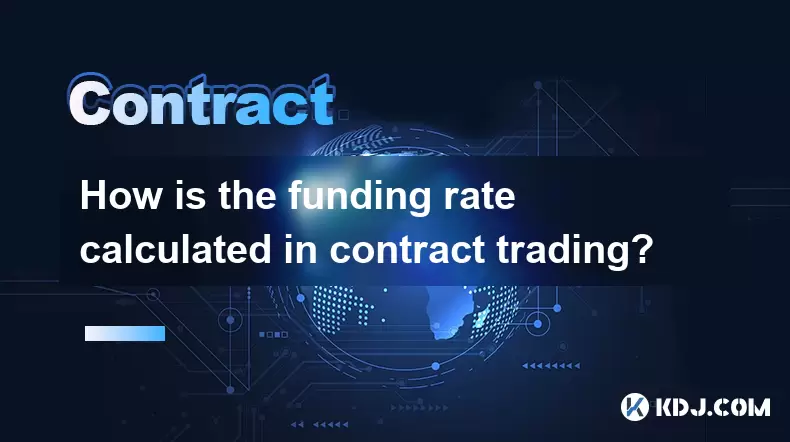
Understanding the Concept of Funding Rate in Contract Trading
The funding rate is a mechanism used in perpetual futures contracts to ensure that the price of the perpetual contract remains close to the spot price of the underlying asset. Unlike traditional futures contracts, which have an expiration date, perpetual contracts do not expire. To prevent the price from deviating too far from the actual market price, exchanges implement periodic funding payments between long and short traders.
This rate is usually calculated and applied at fixed intervals, often every 8 hours. If the funding rate is positive, it means long positions pay shorts, indicating that the contract price is trading above the spot price. Conversely, if the rate is negative, shorts pay longs, signaling that the contract is trading below the spot price.
Components Involved in Funding Rate Calculation
The calculation of the funding rate typically involves two main components:
- Interest Rate Offset: This component accounts for the difference in risk-free interest rates between the asset and fiat currency (or stablecoin) being traded.
- Premium or Discount: This reflects the deviation between the perpetual contract price and the index price (spot market price).
Some platforms also introduce a clamping mechanism to avoid extreme volatility in funding rates. This ensures that even during high market activity, the rate doesn't spike beyond certain thresholds.
Step-by-Step Breakdown of Funding Rate Calculation
While different exchanges may use slightly varied formulas, the general method follows this structure:
- Determine the average interest rate differential over a given period.
- Calculate the premium component, which is based on how much the contract price differs from the mark price.
- Combine both values to form the base funding rate.
- Apply any clamping or smoothing mechanisms to prevent sudden jumps.
- Adjust the final rate before applying it to open positions.
For example, on some platforms like Binance or Bybit, the formula might look like this:
Funding Rate = Interest Rate Component + Premium Component
The interest rate component is generally minimal and sometimes set to zero for simplicity. The premium component is derived from real-time data reflecting supply and demand dynamics.
How and When Funding Fees Are Applied
Funding fees are usually collected every 8 hours, although some platforms may vary the interval. Traders with open positions at the designated time will either receive or pay funds depending on the sign of the funding rate.
If you're holding a long position when the rate is positive, you'll pay the fee to those holding short positions. On the other hand, if the rate is negative, shorts pay longs.
These fees are automatically deducted or added to your account balance. Importantly, no funding fee is charged if you close your position before the funding timestamp.
Factors Influencing Funding Rate Volatility
Several market conditions can influence the fluctuation of the funding rate:
- Market Sentiment: Strong bullish or bearish trends can cause persistent deviations between spot and contract prices, leading to higher absolute funding rates.
- Liquidity Conditions: Low liquidity in either the spot or futures market can create pricing discrepancies, affecting the premium component.
- Exchange Policies: Some platforms adjust parameters such as clamp levels or update frequencies to stabilize funding rates.
Additionally, during major news events or macroeconomic announcements, funding rates can swing dramatically, making it essential for traders to monitor them closely.
Practical Implications for Traders
Understanding the funding rate is crucial for traders, especially those who hold leveraged positions overnight or for extended periods. High positive or negative rates can significantly impact profitability.
Traders should regularly check the funding rate schedule on their preferred platform and consider using tools or alerts to track changes. For arbitrageurs, consistent funding rate imbalances can present opportunities to profit by taking offsetting positions in spot and futures markets.
Furthermore, traders can use funding rate history as a sentiment indicator. A consistently positive rate may suggest bullish pressure, while a negative trend could indicate bearish dominance.
Frequently Asked Questions
Q: Can I trade perpetual futures without paying funding fees?
A: Yes, as long as you close your position before the next funding timestamp, you won’t be charged or receive any funding fee.
Q: How often are funding rates updated on most exchanges?
A: Most major exchanges update the funding rate every 8 hours, though some platforms may differ slightly in timing.
Q: Is the funding rate the same across all cryptocurrencies on a single exchange?
A: No, each cryptocurrency has its own independent funding rate, influenced by its specific market conditions and trader behavior.
Q: Do funding rates affect margin requirements in contract trading?
A: While funding fees don’t directly change margin requirements, they can reduce equity over time, potentially increasing the risk of liquidation if not managed properly.
Disclaimer:info@kdj.com
The information provided is not trading advice. kdj.com does not assume any responsibility for any investments made based on the information provided in this article. Cryptocurrencies are highly volatile and it is highly recommended that you invest with caution after thorough research!
If you believe that the content used on this website infringes your copyright, please contact us immediately (info@kdj.com) and we will delete it promptly.
- 2025-W Uncirculated American Gold Eagle and Dr. Vera Rubin Quarter Mark New Products
- 2025-06-13 06:25:13
- Ruvi AI (RVU) Leverages Blockchain and Artificial Intelligence to Disrupt Marketing, Entertainment, and Finance
- 2025-06-13 07:05:12
- H100 Group AB Raises 101 Million SEK (Approximately $10.6 Million) to Bolster Bitcoin Reserves
- 2025-06-13 06:25:13
- Galaxy Digital CEO Mike Novogratz Says Bitcoin Will Replace Gold and Go to $1,000,000
- 2025-06-13 06:45:13
- Trust Wallet Token (TWT) Price Drops 5.7% as RWA Integration Plans Ignite Excitement
- 2025-06-13 06:45:13
- Ethereum (ETH) Is in the Second Phase of a Three-Stage Market Cycle
- 2025-06-13 07:25:13
Related knowledge
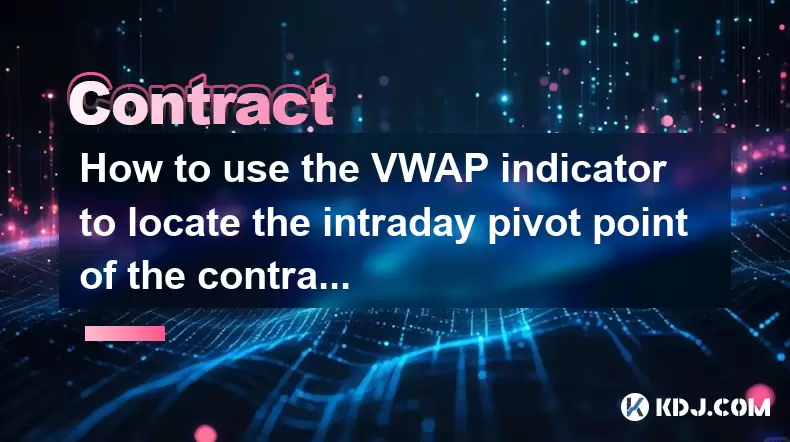
How to use the VWAP indicator to locate the intraday pivot point of the contract?
Jun 18,2025 at 05:35pm
Understanding the VWAP Indicator and Its Relevance in Contract TradingThe VWAP (Volume Weighted Average Price) indicator is a powerful tool used by traders to determine the average price of an asset based on both volume and price. It provides insight into how institutional traders operate, making it especially useful for intraday contract trading. Unlik...
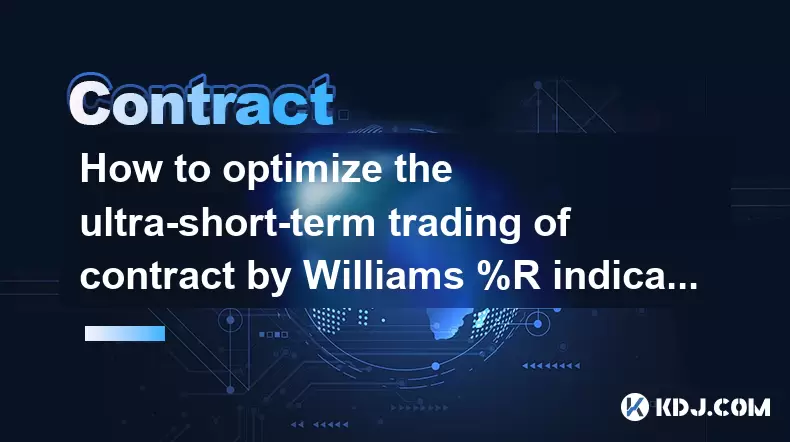
How to optimize the ultra-short-term trading of contract by Williams %R indicator?
Jun 18,2025 at 03:49pm
Understanding the Williams %R Indicator in Cryptocurrency TradingThe Williams %R indicator, developed by Larry Williams, is a momentum oscillator used to identify overbought and oversold conditions in financial markets. In the context of cryptocurrency trading, especially ultra-short-term contract trading, this tool becomes crucial for detecting potenti...

How to design the profit-taking rules of contract in combination with volume-weighted average price?
Jun 18,2025 at 06:50pm
Understanding the Basics of Volume-Weighted Average Price (VWAP)Volume-Weighted Average Price, or VWAP, is a trading indicator used to determine the average price a cryptocurrency has traded at throughout a session, based on both volume and price. It helps traders understand whether an asset is being bought or sold aggressively. In crypto contract tradi...
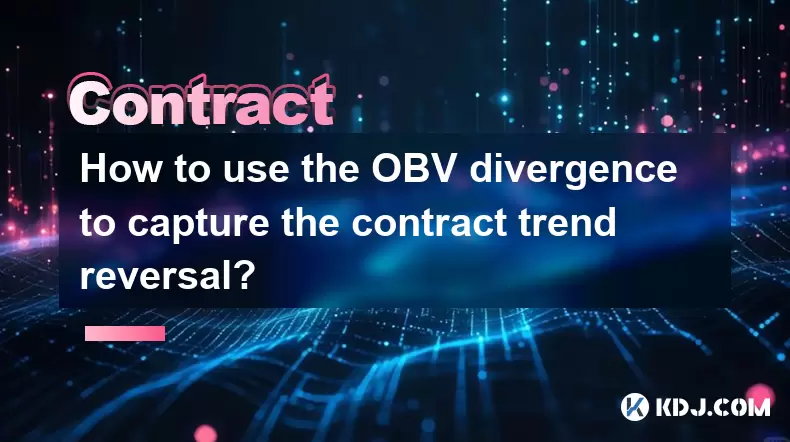
How to use the OBV divergence to capture the contract trend reversal?
Jun 18,2025 at 04:07pm
Understanding the OBV Indicator and Its Role in Cryptocurrency TradingThe On-Balance Volume (OBV) is a momentum indicator that combines volume and price to predict changes in cryptocurrency trends. It assumes that volume precedes price movement, making it a valuable tool for identifying potential reversals in contract trading. When the OBV line diverges...
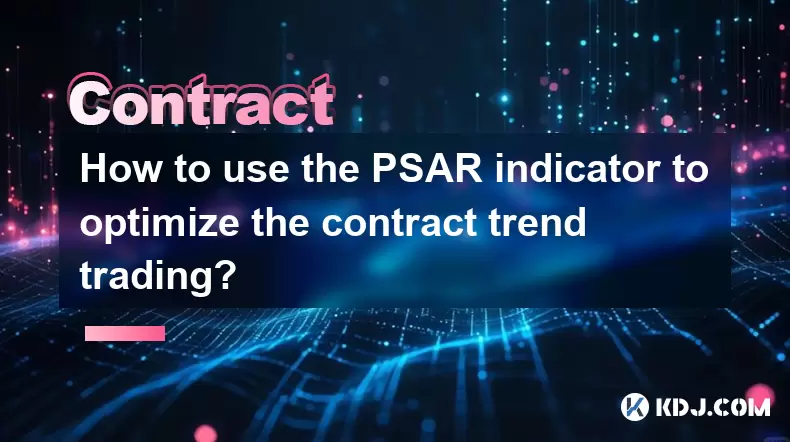
How to use the PSAR indicator to optimize the contract trend trading?
Jun 18,2025 at 06:21pm
Understanding the PSAR Indicator in Cryptocurrency TradingThe Parabolic SAR (Stop and Reverse) indicator is a technical analysis tool widely used by traders to identify potential reversals in price movements. In cryptocurrency contract trading, where volatility is high and trends can change rapidly, the PSAR helps traders make informed decisions about e...
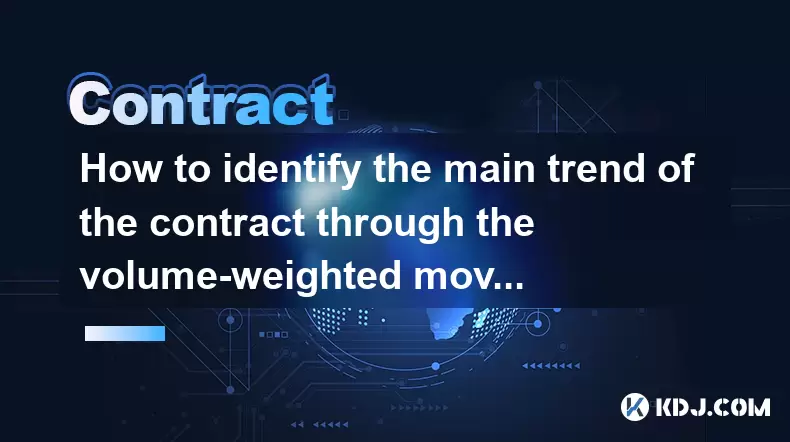
How to identify the main trend of the contract through the volume-weighted moving average?
Jun 18,2025 at 03:57pm
What Is the Volume-Weighted Moving Average (VWMA)?The Volume-Weighted Moving Average (VWMA) is a technical indicator that calculates the average price of an asset over a specified period, giving more weight to prices with higher trading volume. Unlike the traditional moving average, which only considers closing prices, the VWMA incorporates volume into ...

How to use the VWAP indicator to locate the intraday pivot point of the contract?
Jun 18,2025 at 05:35pm
Understanding the VWAP Indicator and Its Relevance in Contract TradingThe VWAP (Volume Weighted Average Price) indicator is a powerful tool used by traders to determine the average price of an asset based on both volume and price. It provides insight into how institutional traders operate, making it especially useful for intraday contract trading. Unlik...

How to optimize the ultra-short-term trading of contract by Williams %R indicator?
Jun 18,2025 at 03:49pm
Understanding the Williams %R Indicator in Cryptocurrency TradingThe Williams %R indicator, developed by Larry Williams, is a momentum oscillator used to identify overbought and oversold conditions in financial markets. In the context of cryptocurrency trading, especially ultra-short-term contract trading, this tool becomes crucial for detecting potenti...

How to design the profit-taking rules of contract in combination with volume-weighted average price?
Jun 18,2025 at 06:50pm
Understanding the Basics of Volume-Weighted Average Price (VWAP)Volume-Weighted Average Price, or VWAP, is a trading indicator used to determine the average price a cryptocurrency has traded at throughout a session, based on both volume and price. It helps traders understand whether an asset is being bought or sold aggressively. In crypto contract tradi...

How to use the OBV divergence to capture the contract trend reversal?
Jun 18,2025 at 04:07pm
Understanding the OBV Indicator and Its Role in Cryptocurrency TradingThe On-Balance Volume (OBV) is a momentum indicator that combines volume and price to predict changes in cryptocurrency trends. It assumes that volume precedes price movement, making it a valuable tool for identifying potential reversals in contract trading. When the OBV line diverges...

How to use the PSAR indicator to optimize the contract trend trading?
Jun 18,2025 at 06:21pm
Understanding the PSAR Indicator in Cryptocurrency TradingThe Parabolic SAR (Stop and Reverse) indicator is a technical analysis tool widely used by traders to identify potential reversals in price movements. In cryptocurrency contract trading, where volatility is high and trends can change rapidly, the PSAR helps traders make informed decisions about e...

How to identify the main trend of the contract through the volume-weighted moving average?
Jun 18,2025 at 03:57pm
What Is the Volume-Weighted Moving Average (VWMA)?The Volume-Weighted Moving Average (VWMA) is a technical indicator that calculates the average price of an asset over a specified period, giving more weight to prices with higher trading volume. Unlike the traditional moving average, which only considers closing prices, the VWMA incorporates volume into ...
See all articles

























































































